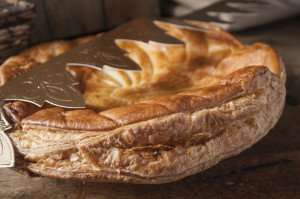Top Food and Drink Trends for Summer
June 14, 2024
There are very few activities we find more exciting or interesting than trying new foods and cooking our favorite innovations at home. Summer is…
Read This Post For Christians January 6 marks the day of the Epiphany, the day that commemorates when the three wise men visited and gave gifts to the Christ child. As with many religious holidays, are are distinct culinary traditions to go with it, most famously the galette in France.
For Christians January 6 marks the day of the Epiphany, the day that commemorates when the three wise men visited and gave gifts to the Christ child. As with many religious holidays, are are distinct culinary traditions to go with it, most famously the galette in France.
Learn to make the galette on a cooking vacation in Normandy.
In the U.S. the Epiphany galette is better known as the “Kings’ cake,” although you’ll more often find it associated with the Mardi Gras season. But whether celebrated on January 6 or on Fat Tuesday, the roots of the cake go back to pagan Roman times and the feast of the solstice.
Learn more about our favorite Mardi Gras treats.
 And as with so many dishes, the French Kings’ galette recipe varies depending on where it’s made. In the south, it’s often made with brioche and is called a gateau de rois. According to the story books, the difference between the galette and the gateau is the result of a battle between pastry shops and cake shops in sixteenth-century Paris (more on that here).
And as with so many dishes, the French Kings’ galette recipe varies depending on where it’s made. In the south, it’s often made with brioche and is called a gateau de rois. According to the story books, the difference between the galette and the gateau is the result of a battle between pastry shops and cake shops in sixteenth-century Paris (more on that here).
For a traditional galette pathivier, the type most often served in the north, puff pastry is the dough of choice. Whether it is a galette or a gateau, the dessert has some type of filling (usually an almond-based filling for the galette and a cream-based filling for the gateau). And nestled somewhere in that filling is a little figurine: frequently of the Christ child, a crown, or one of the wise men, or ,at the very least, a dry bean. Whoever finds that prize – or fève in France – in their slice of cake is declared the king or queen of the day.
Chef Susan Herrmann Loomis in Normandy, France, loves making a variety of galettes throughout the holiday season, well before January 6th. As apples are a popular ingredient in Normandy, one of her favorite recipes features the fruit as well. Here’s how to make it in your own kitchen!
Serves: 6 to 8
Prep time: 45 minutes
Cook time: 30 minutes
Cook method: Bake

For the pastry:
For the almond cream
For the apples
For the egg glaze

1. Start by rolling out the puff pastry into a rectangle and so that it becomes very thin (think about an 1/8 inch).
2. Cut the puff pastry into one 10-inch round, and one 10.5-inch round. Put both of these onto a baking sheet.
3. While the puff pastry refrigerates for about 30 minutes, start making the almond cream. To do so, take a medium-sized bowl and whisk together the sugar with the butter until it’s all combined. Next, add in the egg until the mixture is light. Add in the AP flour and keep whisking. Lastly whisk in the vanilla extract as well as the bitter almond extract.
4. Slowly add in the almond flour while stirring and make sure it’s well combined.
5. In a separate bowl, make the egg wash by whisking the water and egg together.
6. Start heating the apples. To do this, heat a large skillet with a tablespoon of the butter. When the butter starts frothing, stir in the apples until they’ve been coated in butter. Continue cooking and stirring — and even shaking — the pan until the apples have turned a golden brown. They should also be nearly tender all the way through. This should take about 7 to 10 minutes. When done, put to the side.
7. Start preheating the oven to 425°F.
8. Put together the galette. To do this, take the pastry rounds out of the fridge. On the smaller round, put the almond cream into the center and spread outwards. The cream should be the thickest in the center. The cream should sit about 2.5 inches from the pastry’s edge.
9. On top of the almond cream, put on the apple slices in a single layer. If you’re planning on adding a fève, place it in the galette now. Top this with the second pastry round, and line up the edges.
10. Apply the egg wash over the top of the galette and then use the dull edge of a knife to make a scalloped edge around the pastry. This will help it rise evenly.
11. Put the galette in the oven to bake until its both puffy and golden, or about 25-30 minutes.
12. Remove and allow it to cool for around 20 minutes before enjoying!
This particular recipe will serve 6 to 8 people. Want to learn more fabulous seasonal recipes, dessert and otherwise.
If you’re anxious to learn to make this any other recipes in France, try a cooking vacation in Normandy! We can also create a custom France culinary tour for you. Just contact us to get started!
By Peg Kern
Sign up to receive our newsletter, which includes travel tips, recipes, promotions, and information on our best cooking tours.
Find more photos, videos, food facts, and travel stories from The International Kitchen on Facebook, Instagram, Pinterest, Twitter, and YouTube.